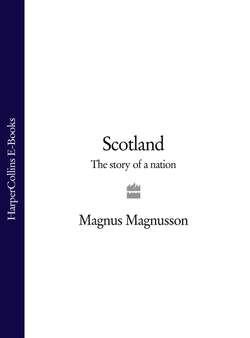Читать книгу Scotland: The Story of a Nation - Magnus Magnusson - Страница 9
Chapter 1 IN THE BEGINNING
ОглавлениеEngland is the southern, and Scotland is the northern part of the celebrated island called Great Britain. England is greatly larger than Scotland, and the land is much richer, and produces better crops. There are also a great many more men in England, and both the gentlemen and the country people are more wealthy, and have better food and clothing there than in Scotland. The towns, also, are much more numerous, and more populous.
Scotland, on the contrary, is full of hills, and huge moors and wildernesses, which bear no corn, and afford but little food for flocks of sheep or herds of cattle. But the level ground that lies along the great rivers is more fertile, and produces good crops. The natives of Scotland are accustomed to live more hardily in general than those of England.
TALES OF A GRANDFATHER, CHAPTER I
For three billion years Scotland was on a collision course with England.
I am talking in terms of geology. Scotland’s geological past involves a barely believable story in which whole continents moved around like croutons floating half-submerged in a bowl of thick soup; a story of great oceans forming and disappearing like seasonal puddles, of mighty mountains being thrown up and worn down, of formidable glaciers and ice-caps advancing and retreating behind mile-thick walls of ice as they melted and reformed again. Scotland itself has been a desert, a swamp, a tropical rainforest, and a desert again; it has drifted north over the planet with an ever-changing cargo of lizards, dinosaurs, tropical forests, giant redwoods, sharks, bears, lynx, giant elk, wolves – and also, in the last twinkling of an eye in the geological time-scale, human beings.
And always it was on that inexorable collision course with England.
In their learned writings, geologists tend to toss millions of years around like confetti. About three billion years ago what is now (largely speaking) ‘Scotland’ was part of a continent known as Laurentia, one of the many differently-sized ‘plates’ which moved slowly around the surface of the globe. Some eight hundred million years ago it was lying in the centre of another super-continent thirty degrees south of the equator. Over aeons of time it wandered the southern hemisphere before drifting north across the equator. By six hundred million years ago Scotland was attached to the North American continent, separated by an ocean called Iapetus from the southerly part of what was to become Britain and which was then attached to the European continent.
And then, some sixty million years ago, the Iapetus ocean began to close. North Britain and South Britain came together, roughly along the line of Hadrian’s Wall. That collision produced the Britain we know today (although it was still connected to Europe). But the weld continued to be subject to stress and strain long after the land masses had locked together: over a three-million-year period a chain of volcanoes erupting off the western seaboard of Scotland created many of the islands of the Hebrides, including Skye, Mull, Arran, Ailsa Craig, St Kilda and Rum.
The foundation of history is geology and its related subject of geomorphology. The underlying rock has shaped the landscape and has influenced, through the soil, the kind of plants, animals, birds and insects in every part of the countryside; it has thereby shaped the lives and livelihoods of the human communities which have lived here.
Agriculture would flourish on the productive farmland on the flatter east coast of Scotland. The more mountainous landscape of the west with its thin, acid soils was suitable only for subsistence husbandry. In the Central Belt of Scotland the abundance of coal and oil-shale entombed in the underlying rocks fuelled the Industrial Revolution and would foster the growth of the iron, steel, heavy engineering and shipbuilding industries.
Edinburgh Castle, at the heart of what became the nation of Scotland, would be built on the eroded roots of a volcano which had erupted some 340 million years ago, when Scotland still lay south of the equator. Castle Rock itself was carved into a classic crag-and-tail shape by the gouging passage of ice during the last glaciation.
When Sir Walter Scott opened his Tales of a Grandfather with his summary description of the difference between Scotland and England, the modern science of geology was in its infancy (that science, incidentally, was created by Scotsmen like James Hutton1 and Sir Charles Lyell2. Scott did not know why Scotland was so different from England; it took the pioneers of geology to explain it.
